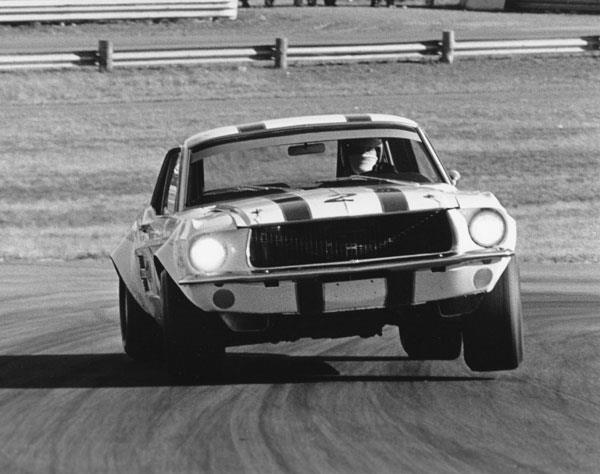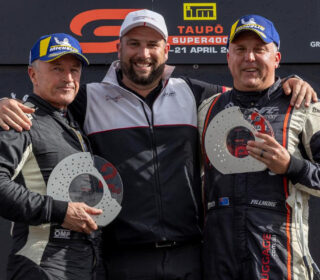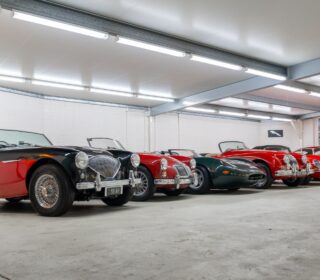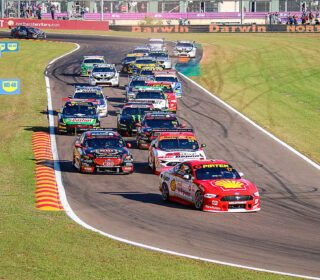Why V8’s are the backbone of Motorsport
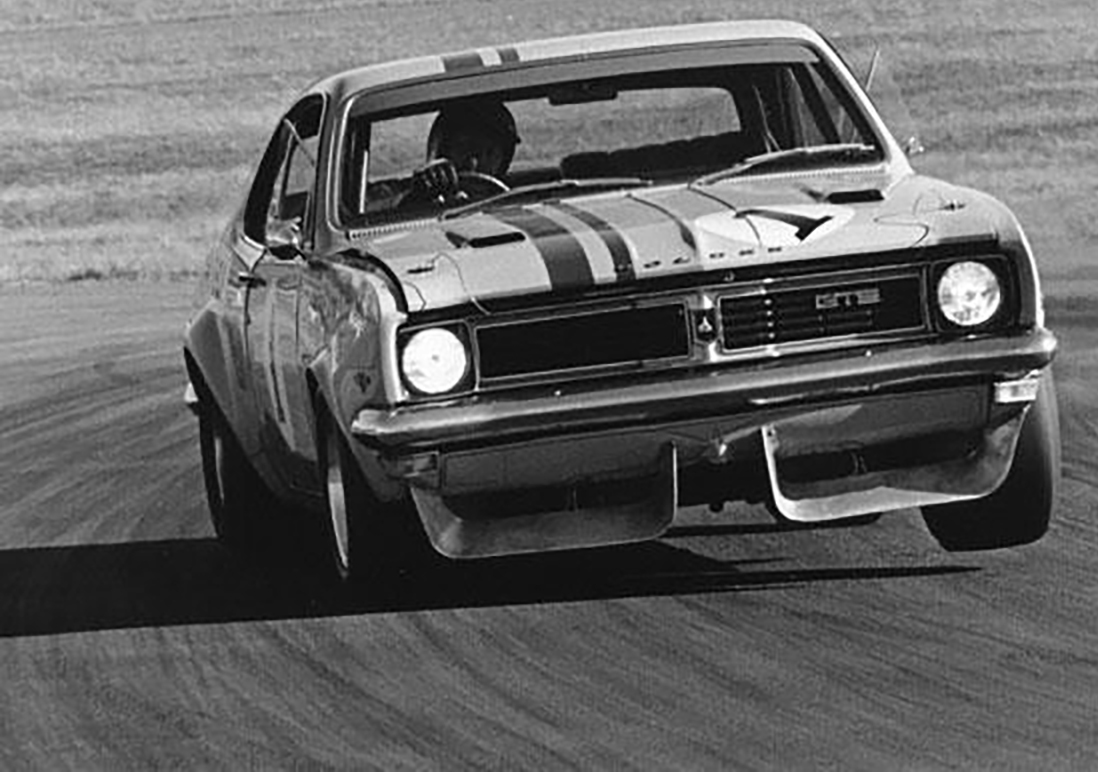
MOTORSPORT is changing. At every turn we hear of new engine configurations, new names like ‘Power Units’ and even new fuels with Formula E and Touring Cars and RallyX also looking at electric powered horizons.
In Australia, and indeed the USA, the V8 has been the one constant over decades of racing across all formulas of cars. And the fans lap it up.
Although our major race circuits had seen V8’s been raced in the form of Ford Galaxies’ and Studebakers and others in the early 1960’s, it was arguably Norm Beechey who changed the course of Touring Car Racing in Australia when he landed his ATCC winning Ford Mustang in early 1965 just 12 months after the launch of the car in the USA. Beechey and then Ian ‘Pete’ Geoghegan were the V8 heroes of the 1960’s with Bob Jane and a host of others joining the V8 ranks.
With only a couple of category and direction changes over the following 50 years, V8’s have been the mainstay.
The love affair with the noise and aggression of V8’s in the front or rear of racing cars has never been as evident as two examples in recent times. The first example was the potential move to multiple engine platforms in Supercars.
Before the launch of the ZB Holden Commodore, works and homologation team Triple 888 Engineering were pouring resources into the twin turbo six cylinder that, it was planned, would power the Red Bull ZB’s and other teams well into the next decade.
Not only was extensive development being conducted in house and in the USA, the engine was plumbed into the V8 Supercar ‘project’ Holden Sandman and undertook initial testing. It seemed so confident that this Twin Turbo would replace the ubiquitous Chevrolet based V8 that the T888 Sandman was taken to the 2017 Supercheap Bathurst 1000 for display laps.
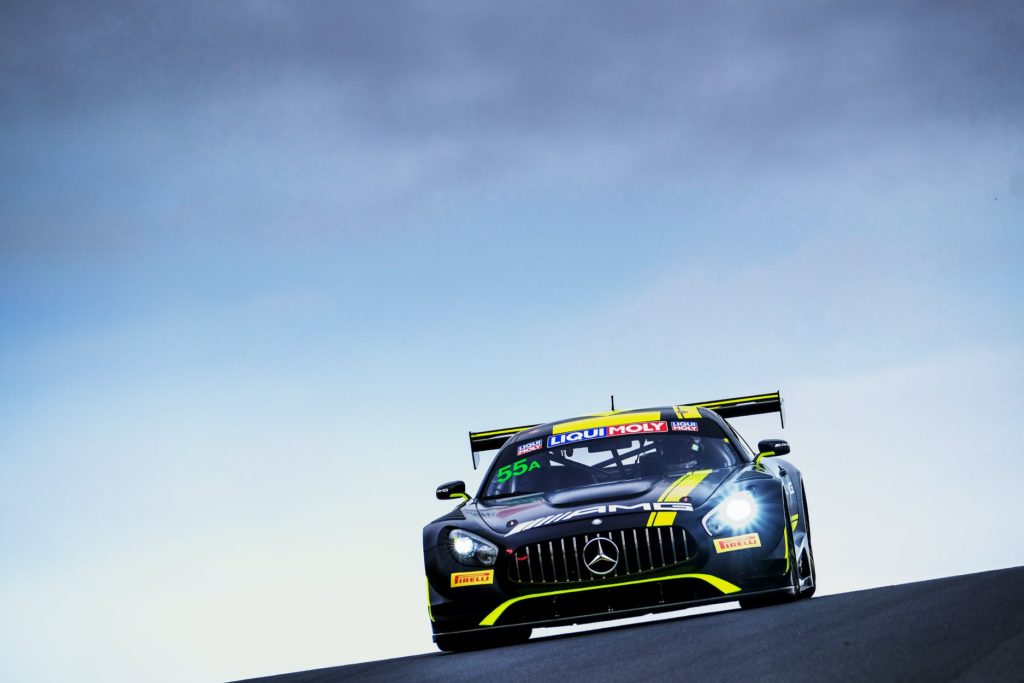
Not surprisingly Social Media lit up, with the ‘end of the world as we know it’ being the general take out. But just as quickly as it arrived, the GM Twin Turbo V6 was shelved.
“After working closely with all Holden teams we have decided to put a hold on the development of the V6 Supercars engine,” said then Executive Director of Holden Marketing, Mark Harland in an early 2018 press statement.
While Holden has pulled the pin on its new engine, it was reported that Supercars itself had been testing and developing its own twin-turbo V6 as part of a knowledge-gathering exercise for Gen2. That future of that program is somewhat unknown.
“Our current rules allow manufacturers and teams to implement various configurations of power plants. So, while the ZB won’t have a turbo engine configuration at the moment, it’s important that we, as a category, continue to build our learnings and expertise on forced induction,” said Supercars CEO, Sean Seamer.
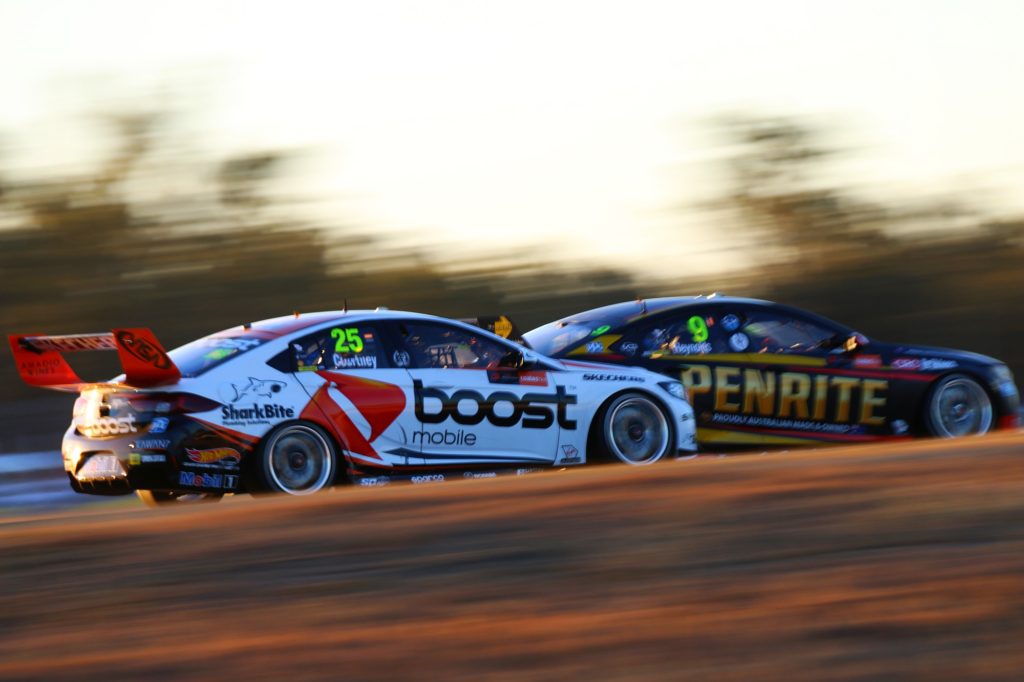
GM’s former official Supercars race team, Holden Walkinshaw Andretti United, endorsed the decision by Holden Motorsport to axe the V6 program.
“The V8 engine is synonymous with this category, there is so much history and passion surrounding it, so it’s fantastic to see Holden and the sport listening to the fans,” said Walkinshaw Andretti United director Ryan Walkinshaw.
But the kicker was the amazing reaction to the recent launch of the long awaited S5000 at Sydney Motorsport Park.
And here in lies the issue.
Dick Johnson was the first to have a say on the expansion of the engine rules when they were drafted back in 2015 at the inaugural DJR Team Penske Press Conference at the Clipsal 500 in March 2015.
“Look, I’ve been around motorsport for a long time and I think we’re revisiting something that didn’t work,” Johnson said.
“When you have a look here on Saturday and Sunday, (you will see) the number of people who will sit up in those stands, and the day they (Supercars) don’t sound like they sound today, will be a sad day.”
Johnson was of course referring to the last era of non V8 Touring Car competition in Australia, the Group A category.
Group A in Australia actually started in mid-late 1984, but would not become uniform until 1985. From 1993, CAMS replaced Group A with a new formula for Australian Touring Car Racing. This was initially open to five litre V8 powered cars and two litre cars, later to become known as V8 Supercars and Super Touring Cars respectively.
Whilst is ironic that Johnson and the rest of the major Touring Car Teams of the 1980’s embraced the Group A formula, it was a polarizing and politically charged era. Not only was Johnson a force in Group A racing, he and his Queensland based Shell team built arguably the fastest and best Ford Sierra RS 500 Cosworth’s in the world.
But the fans were restless: Nissan had built a barnstorming GTR known as Godzilla and the lack of V8 racing saw crowds beginning to drift away.
The arrival of the V8 category and the launch of AVESCO with its V8 Supercars branding injected new life into the local racing scene and some twenty years on continues to be the fan favourite formula in Australia and New Zealand.
But the V8 appeal goes far further than the Supercar grid. In Australian GT racing the Mercedes – AMG GT3 and Aston Martin Vantage arguably are the best sounding cars on the grid.
Touring Car Masters, while bringing together an eclectic mix of Aussie and US Muscle Cars, builds its huge fan base off the V8 engine.
But the kicker was the amazing reaction to the recent launch of the long awaited S5000 at Sydney Motorsport Park. The car is a real open wheeler of this era – carbon fibre tub, halo but the comments from the media and fans was the noise. The V8 noise. The other attributes were hardly mentioned.
“Loud and fast” was the order of the day.
Had this car arrived in Australia with a 2018 FIA Formula 2 engine, a 620 hp 3.4-litre V6 single-turbocharged direct-injected unit, there would not have been much more than passing interest from hard core fans and the media. The whole reason for this car’s intrigue is the Ford V8. And the noise it makes.
But the aforementioned love affair is not just a Down Under phenomenon. Imagine NASCAR with turbo V6 engines. In Sports Cars, the Aston Martin’s competing in the WEC and the famous yellow Corvette Racing C7.R are global fan favourites. Le Mans 24H commentators regularly mention the thunderous roar these cars emit.

Having seen them live at the famous La Sarthe circuit the writer can testify that at 4.00am at the Porsche Curves these cars are a standout!
And what about a full field of Sprintcars at Parramatta or Kwinana? The spectacle is enhanced by the brilliant engine note these cars are famous for.
Formula 1’s V6 turbo-hybrid era has been a graphic example of fans reacting to dumbing down the very core of racing’s appeal. Whilst the cars have returned to some degree of ‘noise’ appeal, they commenced life as a very poor reminder of the glory days of screaming V8 and V10 F1 engines.
So where are we heading? The proponents of new engine regulations point at the V8 as a dinosaur, a relic of yesterday’s racing. Irrelevant.
Electrification is the future they say.
Well, perhaps from a technology and futurist viewpoint they may be right.
But the more motorsport competes for audiences on track and by way of the myriad of communication channels open to it, we must remember it is first and foremost an entertainment platform. One of the things that adds to the spectacle is the noise.
And in Australia’s case, it’s the noise of a V8. Long may it survive.
WORDS: Dale Rodgers
IMAGES: Andrew Hall, Graham Ruckett Photography, Supplied
